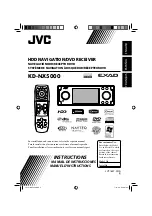
Chapter 4 SPAN with Dual Antenna
OEM7 SPAN Installation and Operation User Manual v14
133
4.3.1 Aided Transfer Alignment - ALIGN Injected Azimuth
This alignment routine is the preferred dual antenna alignment method. It is used if the alignment mode is set to
AIDED_TRANSFER using the
ALIGNMENTMODE
command, and can be used if the alignment mode is set to
AUTOMATIC.
If your vehicle is not stationary during the alignment, such as may be the case on a ship, use the Aided Transfer
Alignment routine. This alignment method uses the ALIGN baseline solution to perform an instantaneous align-
ment of the vehicle azimuth.
The alignment happens instantaneously after the receiver establishes communication with the IMU and com-
putes a verified, fixed integer, ALIGN solution.
To guarantee the use of this alignment mode, the
ALIGNMENTMODE
command must be sent to the receiver:
ALIGNMENTMODE AIDED_TRANSFER
4.3.2 Unaided Alignment
The unaided alignment sets the SPAN system to use only single antenna alignment options (static, kinematic or
manual alignment).
To use this alignment mode, the
ALIGNMENTMODE
command must be sent to the receiver.
ALIGNMENTMODE UNAIDED
4.3.3 Automatic Alignment Mode - Automatic Alignment (default)
Automatic Alignment Mode Selection is the default setting for a SPAN receiver. This mode is designed to allow
alignment of the system as quickly as possible, using either an aided transfer alignment (
above); a kinematic alignment (
on page 96); or a manual
alignment (
The first available technique will be used, regardless of its relative quality. If you wish to guarantee a specific
technique is used, or use an aided static alignment, you must select the desired alignment mode manually. No
additional configuration is required to use this alignment routine.
4.4 SPAN ALIGN Attitude Updates
The INS heading updates are used to help constrain the azimuth drift of the INS solution whenever possible.
This is of the greatest value with lower-quality IMUs and in environments with low dynamics where the attitude
error is less observable. Slow moving marine or train applications are good examples of the intended use. By
providing an external heading source, the solution drift can be constrained in these environments.
You can monitor the heading update status as outlined in the
INSUPDATESTATUS
log in the
mands and Logs Reference Manual
.
















































